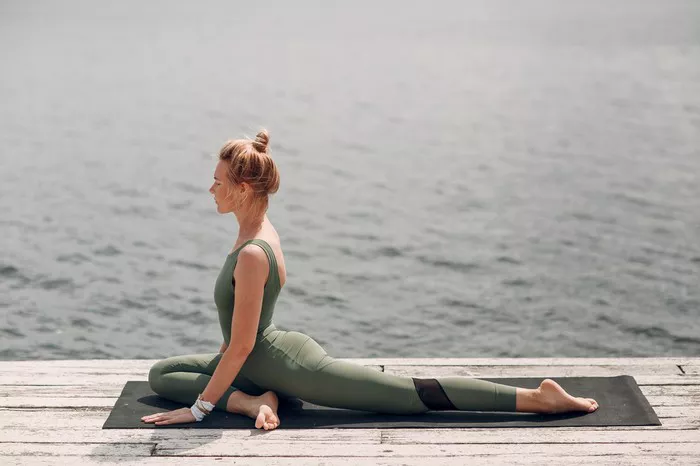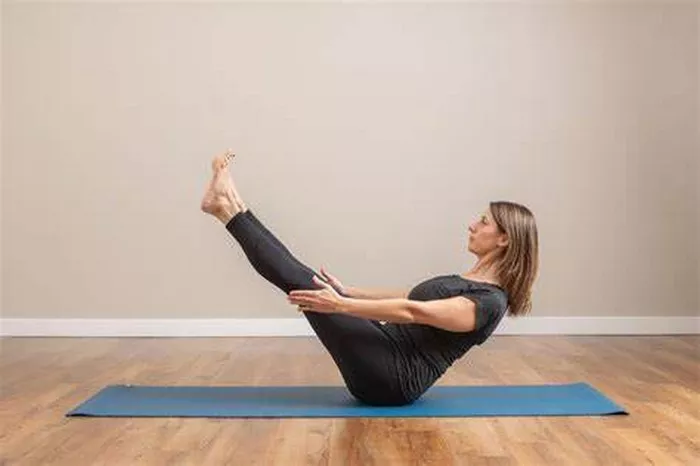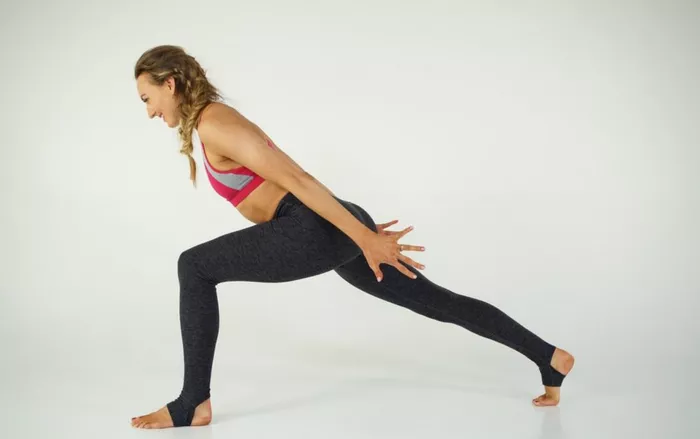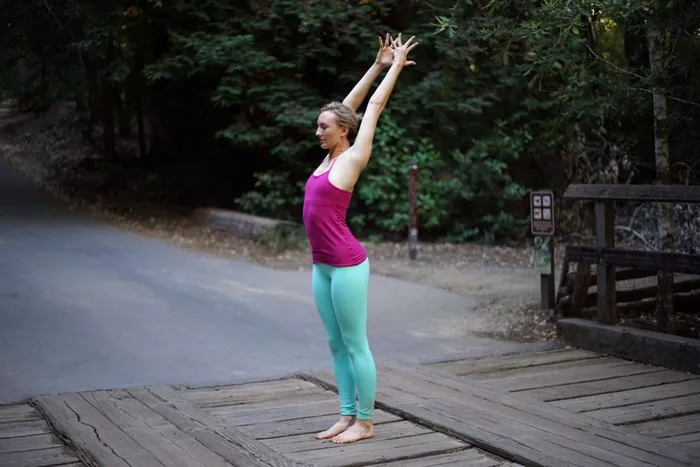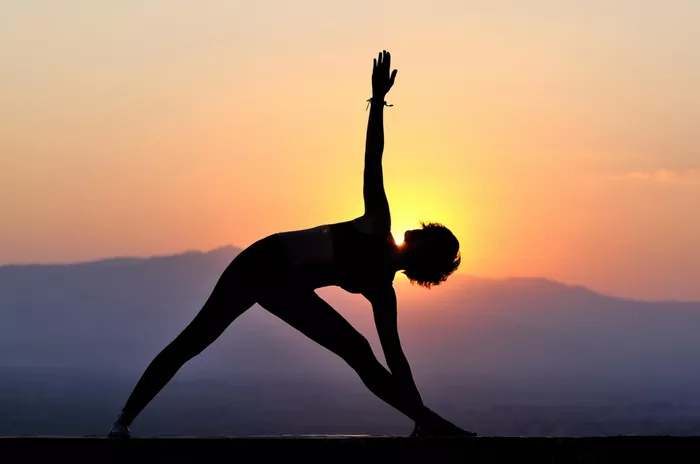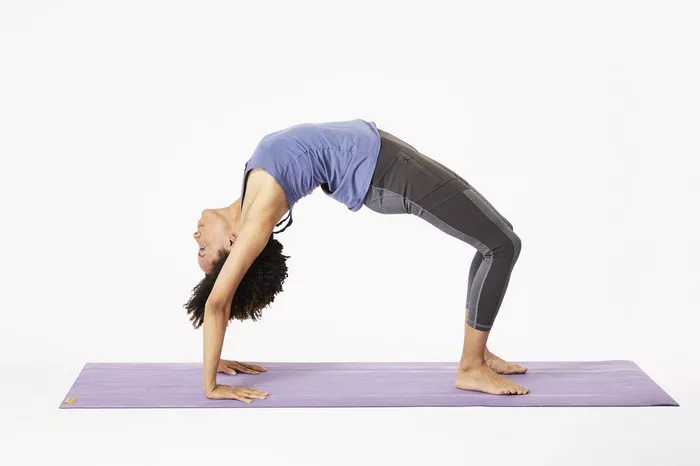When it comes to achieving a toned and strong abdomen, many people think of crunches, sit-ups, or other traditional exercises. But did you know that yoga can be just as effective—if not more—for sculpting your abs? Yoga is not only a great way to improve flexibility and reduce stress, but it also provides an excellent workout for your core muscles. Some of the hardest yoga poses challenge your abs in ways that traditional exercises can’t, requiring strength, balance, and focus.
In this article, we’ll explore several challenging yoga poses that target your abs. These poses will not only help you build core strength but also improve your overall posture, flexibility, and stability. Whether you are a beginner or an experienced yogi, these poses will push your limits and help you achieve the abs you’ve always wanted.
Why Yoga Is Great for Abs
Before we dive into the hard yoga poses, it’s important to understand why yoga can be so effective for building abdominal strength. The core is the central part of your body, and almost every yoga pose engages the muscles in this region, whether consciously or unconsciously. From the deep muscles of your abdomen to your obliques and lower back, yoga poses work to strengthen and tone these areas.
Unlike traditional ab exercises, yoga poses engage multiple muscle groups at once, creating a more balanced and functional core. This is especially important for improving posture, stability, and overall strength. The combination of dynamic movement, breathing techniques, and mindfulness during yoga helps you engage your abs in a way that many other workouts don’t.
How Yoga Engages the Core
In yoga, core engagement is a fundamental concept. As you flow through the different poses, your body needs to stabilize itself and find balance, which activates the muscles of your core. Many poses require you to maintain your body weight in challenging positions, forcing the abdominals to work harder to keep the body steady. This is why yoga is considered an effective and holistic way to strengthen your abs—it’s not just about flexing your muscles, but also about engaging them dynamically throughout each pose.
Benefits of Building a Strong Core
Having a strong core offers several benefits beyond just aesthetics. A strong core improves posture, supports your spine, helps with balance, and makes other physical activities (like running, cycling, or lifting) easier. It can also reduce the risk of back pain, enhance flexibility, and even boost athletic performance.
So, whether you’re looking for a six-pack or simply a stronger, more functional body, yoga poses for abs will help you achieve your goals.
Hard Yoga Poses for Abs
Now, let’s take a closer look at some of the most challenging yoga poses that will work your abs. These poses will push your core strength to the next level and give you a solid abdominal workout.
1. Plank Pose (Phalakasana)
The plank pose is one of the most effective yoga poses for targeting the core. It strengthens the abdominals, obliques, and lower back while improving overall body stability.
How to Do It:
Start on your hands and knees in a tabletop position.
Spread your fingers wide and press firmly into the mat.
Step your feet back, coming into a straight line from head to heels.
Engage your core, drawing your navel toward your spine.
Keep your body in one straight line, avoiding sagging in the lower back or lifting your hips too high.
Hold the position for 30 seconds to 1 minute, focusing on keeping your abs tight and your breath steady.
Why It’s Hard: Plank pose may seem simple, but holding your body in a straight line for an extended period requires significant core strength and endurance. The longer you hold the plank, the more your abs will burn.
2. Side Plank (Vasisthasana)
Side plank is a variation of the traditional plank, which shifts the focus to the obliques (the muscles on the sides of your abdomen). This challenging pose will work your core in a different way while also engaging your shoulders, arms, and legs.
How to Do It:
Start in a regular plank position.
Shift your weight onto one hand and rotate your body to face sideways, stacking your feet on top of each other.
Lift your top arm toward the ceiling, keeping your body in a straight line.
Engage your core and hold the position for 30 seconds to 1 minute.
Switch sides and repeat.
Why It’s Hard: Side plank requires balance and stability, as you need to engage your core to keep your body in a straight line. It also requires strength in the obliques, shoulders, and legs to maintain proper form.
3. Boat Pose (Navasana)
Boat pose is a powerful yoga pose that targets the deep abdominal muscles, including the lower abs and hip flexors. It requires a lot of core strength to hold the position, making it a great choice for anyone looking to build a stronger midsection.
How to Do It:
Sit on the floor with your knees bent and your feet flat on the ground.
Lean back slightly, keeping your spine long.
Lift your legs off the floor, balancing on your sit bones.
Extend your legs to form a “V” shape, keeping your arms parallel to the floor.
Engage your abs to keep your body in this position, avoiding any arching in your lower back.
Hold for 30 seconds to 1 minute, then lower your legs to rest. Repeat as needed.
Why It’s Hard: Boat pose demands a lot of core strength, especially in the lower abs. It also challenges your balance, as you have to maintain stability while holding your legs off the floor.
4. Crow Pose (Bakasana)
Crow pose is an arm balance that challenges both the core and the upper body. While it requires arm strength and balance, the core plays a vital role in maintaining stability and control.
How to Do It:
Start in a squat position with your feet hip-width apart.
Place your hands on the mat in front of you, fingers spread wide.
Bend your elbows slightly and begin to shift your weight forward.
Slowly lift your feet off the ground, balancing on your arms.
Engage your core to keep your body stable and your legs lifted.
Hold the position for as long as you can, then gently lower your feet back to the ground.
Why It’s Hard: Crow pose requires a high level of balance and core engagement to keep your legs off the ground. It challenges your abdominal muscles as you work to maintain stability and avoid falling forward.
5. Wheel Pose (Urdhva Dhanurasana)
Wheel pose is an advanced backbend that also requires strong abdominal engagement. This challenging pose works the entire body, including the core, and opens the chest and shoulders.
How to Do It:
Lie on your back with your knees bent and feet flat on the floor, hip-width apart.
Place your hands beside your ears, fingers pointing toward your shoulders.
Press into your hands and feet as you lift your hips and chest off the ground.
Straighten your arms and legs, coming into a deep backbend.
Engage your core and lift your chest toward the sky, making sure not to overarch your lower back.
Hold for a few breaths, then gently lower your body back to the floor.
Why It’s Hard: Wheel pose demands a lot of core strength to support the lower back and keep the body stable in the backbend. It also requires flexibility in the spine and shoulders, making it a challenging pose for many people.
6. Dolphin Pose (Ardha Pincha Mayurasana)
Dolphin pose is a forearm variation of the downward-facing dog that targets the core while also working the shoulders and upper back.
How to Do It:
Start in a tabletop position, then lower your forearms to the ground.
Keep your elbows shoulder-width apart and press firmly into the floor.
Lift your hips toward the ceiling, straightening your legs and coming into an inverted “V” shape.
Engage your core to keep your body stable, and press your heels toward the floor.
Hold for 30 seconds to 1 minute, focusing on deepening the stretch while keeping your abs engaged.
Why It’s Hard: Dolphin pose challenges the core while also requiring strong arms and shoulders. The inversion adds an element of balance, forcing you to engage your core for stability.
7. Wheel Pose Variation (Urdhva Dhanurasana with Leg Lift)
This is an advanced variation of the standard wheel pose. After lifting into the wheel, you’ll raise one leg at a time, increasing the challenge for your core muscles.
How to Do It:
Begin in a standard wheel pose.
Once you are in the full backbend, engage your abs and lift one leg off the ground.
Keep your hips lifted and your core active as you hold the leg in the air for a few breaths.
Lower the leg and repeat with the other leg.
Why It’s Hard: This variation challenges not only your core strength but also your balance and stability, as you need to hold your body in a backbend while lifting and balancing each leg.
Conclusion
Yoga is an incredibly effective way to build core strength and sculpt your abs. By practicing challenging poses like plank, boat, side plank, and crow, you engage your abdominal muscles in a dynamic and functional way, strengthening not just the abs, but the entire body. These poses will help you develop a balanced, strong, and toned midsection, improving your posture, stability, and overall health.
As you work through these hard yoga poses for abs, remember that core strength is built over time. Be patient with your practice, focus on proper form, and gradually increase the duration and intensity of each pose. With consistency, you’ll see noticeable results—both in your abs and your overall yoga practice.
So, the next time you step onto your yoga mat, challenge yourself with these powerful poses, and enjoy the benefits of a strong, stable core.
You Might Be Interested In:

